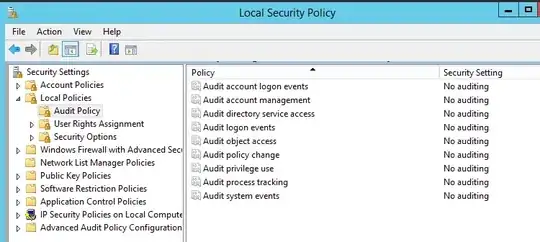It depends if legacy (aka "category level") or advanced audit policies are in effect.
For legacy audit policies (what your screenshot shows):
secedit.exe /export /areas SECURITYPOLICY /cfg filename.txt
For advanced audit policies:
auditpol.exe /get /category:*
What determines if legacy or advanced policy settings are in effect is the registry value:
Key: HKLM\System\CurrentControlSet\Control\Lsa
Value: SCENoApplyLegacyAuditPolicy
This corresponds to the following group policy setting, Windows Settings > Security Settings > Local Policies > Security Options:
Audit: Force audit policy subcategory settings (Windows Vista or later) to override audit policy category settings.
Windows Vista and later versions of Windows allow audit policy to be managed in a more precise way using audit policy subcategories. Setting audit policy at the category level will override the new subcategory audit policy feature.
To allow audit policy to be managed using subcategories without requiring a change to Group Policy, there is a new registry value in Windows Vista and later versions, SCENoApplyLegacyAuditPolicy, which prevents the application of category-level audit policy.
If SCENoApplyLegacyAuditPolicy is enabled/1, legacy audit policy settings are not in effect.
If SCENoApplyLegacyAuditPolicy is disabled/0, legacy audit policy settings are in effect.
